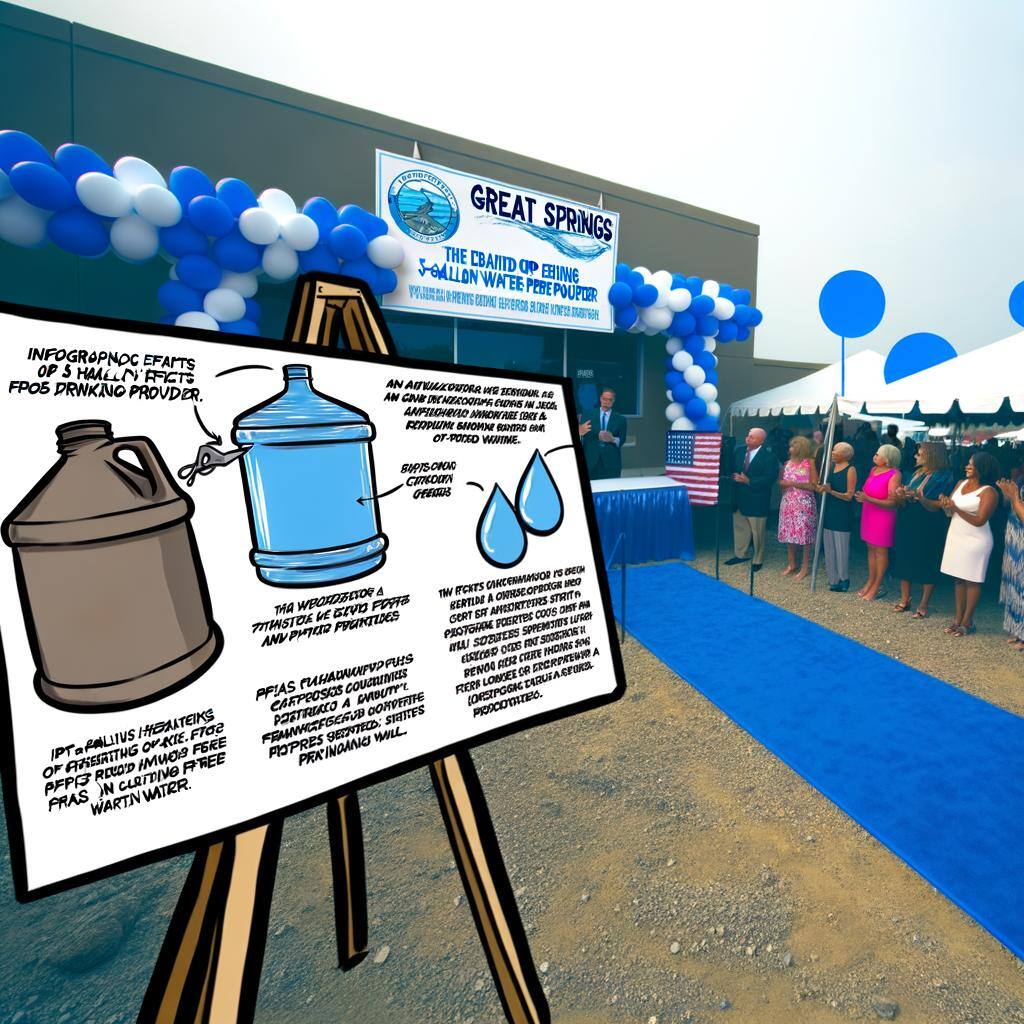Uncovering the Health Effects of PFAS in Drinking Water

Explore the effects of PFAS chemicals in your drinking water. Choose PFAS non-detect water providers like Great Springs®.
Understanding PFAS: Origins and Prevalence in Water Sources
Per- and polyfluoroalkyl substances (PFAS) are a group of man-made chemicals that have been used in industry and consumer products worldwide since the 1950s. PFAS are often referred to as 'forever chemicals' due to their persistent nature in the environment and the human body, where they can accumulate over time. They are commonly found in a variety of consumer products such as non-stick cookware, water-repellent clothing, and products that resist grease, water, and oil.
The prevalence of PFAS in water sources is concerning because these chemicals can easily migrate into the soil, where they leach into groundwater, or they can be discharged into surface water through industrial processes and wastewater treatment plants. The omnipresence of PFAS in the environment means that many water sources, including rivers, lakes, and drinking water systems, are at risk of contamination or already contaminated. That being said, our spring water at Great Springs® is PFAS non-detect! Feel free to check out our PFAS Report and Quality Report here!
The Science Behind PFAS and Their Entry into Drinking Water
PFAS can enter water supplies through industrial releases to air and water, use of firefighting foams (particularly at airports and military bases), and from products that break down and release PFAS into the environment. Once in the water supply, PFAS are resistant to conventional water treatment methods due to their strong carbon-fluorine bonds, making them difficult to remove.
PFAS accumulate in water sources over time and can reach concentrations that pose risks to human health. They are highly soluble in water and are not readily biodegradable, which means that once they enter the drinking water supply, they can persist and spread throughout the water network. This persistence poses significant challenges for water providers in ensuring the safety of drinking water.
Documented Health Risks Associated with PFAS Exposure
Scientific studies have linked PFAS exposure to a range of adverse health outcomes. Some of the most concerning potential health effects include increased cholesterol levels, changes in liver enzymes, decreased vaccine response in children, and an increased risk of high blood pressure or pre-eclampsia in pregnant women. Furthermore, there is evidence to suggest that certain PFAS may affect the growth, learning, and behavior of infants and older children.
In adults, some studies have found associations between PFAS exposure and an increased risk of kidney and testicular cancer, thyroid disease, and lowered fertility. These health risks are particularly concerning because PFAS exposure can occur over long periods, and the effects may only become apparent after significant accumulation in the body.
Protective Measures and Water Treatment Options for PFAS
Reducing PFAS exposure through drinking water requires a combination of protective measures and advanced water treatment options. Protective measures include regular monitoring of water supplies, setting stringent regulatory limits, and issuing advisories to inform the public about PFAS risks. Water utilities can employ advanced treatment technologies such as granular activated carbon (GAC), ion exchange resins, or high-pressure membranes like nanofiltration or reverse osmosis to effectively remove PFAS from water supplies.
Consumer-level interventions can also play a role in protection, such as using water filtration systems certified to reduce PFAS concentrations in drinking water. Public education on the sources and risks of PFAS is crucial for empowering individuals to make informed decisions about their water consumption and advocate for safer water policies.
The only guaranteed strategy for avoiding PFAS in drinking water is to choose a water provider that is guaranteed to be PFAS free, such as Great Springs®. Our desire at Great Springs® is to be a leader among drinking water providers and despite our water never testing above the regulatory limit set by local and federal governments, we installed a state of the art activated carbon filter at our spring site to ensure that our water is 100% PFAS free.
Future Outlook and Regulatory Changes for PFAS in Water Supplies
The future outlook on PFAS in drinking water is one of increased scrutiny and regulatory action. Governments and environmental agencies are recognizing the need for stricter regulations and guidelines to protect public health. This may include setting lower limits for PFAS concentration in drinking water and requiring regular testing by water utilities.
Innovations in water treatment technology and a better understanding of PFAS behavior in the environment will likely lead to more effective methods of removal and prevention of contamination. Public pressure and increasing awareness are also driving manufacturers to find PFAS-free alternatives for consumer products. As scientific research progresses, it is expected that policies will evolve to better reflect the risks associated with PFAS exposure and ensure safer drinking water for all.
.png?width=100&height=100&name=Borderless%20Color%20R%20(2).png)


